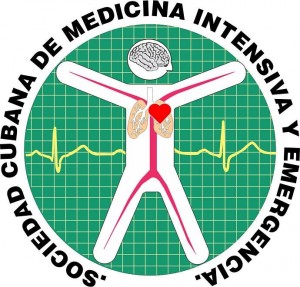Manejo neuroquirúrgico del trauma craneal severo en pediatría / Surgical treatment of paediatric severe brain trauma
Palabras clave:
Trauma craneoencefálicoResumen
PUNTOS CLAVE
El trauma craneal severo en niños es la principal causa de mortalidad y morbilidad en países desarrollados.
Los niños sobrevivientes a un trauma craneal severo presentan discapacidades motoras a largo plazo, déficit cognitivos y trastornos de comportamiento.
El diagnóstico de trauma craneal severo en pediatría se realiza mediante un adecuado interrogatorio, examen físico completo, investigaciones de imagenología.
Le escala de coma de Glasgow pediátrica brinda información sobre el estado y pronóstico de pacientes pediátricos con trauma craneal severo.
Los objetivos del tratamiento del trauma de cráneo severo pediátrico son: prevención de la lesión cerebral por disminución de la presión de perfusión cerebral; mantenimiento de un adecuado control del medio interno; prevención de las complicaciones.
Descargas
Citas
Alnemari AM, Krafcik BM, Mansour TR, Gaudin D. A Comparison of Pharmacologic Therapeutic Agents Used for the Reduction of Intracranial Pressure After Traumatic Brain Injury. World Neurosurg. 2017;106:509–28.
Bohman L-E, Schuster JM. Decompressive Craniectomy for Management of Traumatic Brain Injury: An Update. Curr Neurol Neurosci Rep. 2013;13(11):39.
Bor-Seng-Shu E, Figueiredo EG, Amorim RLO, Teixeira MJ, Valbuza JS, de Oliveira MM, et al. Decompressive craniectomy: a meta-analysis of influences on intracranial pressure and cerebral perfusion pressure in the treatment of traumatic brain injury. J Neurosurg. 2012;117(3):589–96.
Carney N, Totten AM, Hawryluk GWJ, Bell MJ, Bratton SL, Chesnut R, et al. Guidelines for the Management of Severe Traumatic Brain Injury 4th Edition. 2016.
Da Dalt L, Parri N, Amigoni A, Nocerino A, Selmin F, Manara R, et al. Italian guidelines on the assessment and management of pediatric head injury in the emergency department. Ital J Pediatr. BioMed Central. 2018;15;44(1):7.
Dunn LT. Raised intracranial pressure. J Neurol Neurosurg Psychiatry. 2002;73 Suppl 1:i23-7.
Eberle BM, Schnüriger B, Inaba K, Gruen JP, Demetriades D, Belzberg H. Decompressive craniectomy: surgical control of traumatic intracranial hypertension may improve outcome. Injury. 2010;41(9):894–8.
Farahvar A, Gerber LM, Chiu Y-L, Härtl R, Froelich M, Carney N, et al. Response to intracranial hypertension treatment as a predictor of death in patients with severe traumatic brain injury. J Neurosurg. 2011;114(5):1471–8.
Geeraerts T, Velly L, Abdennour L, Asehnoune K, Audibert G, Bouzat P, et al. Management of severe traumatic brain injury (first 24 hours). Anaesth Crit Care Pain Med. 2018;37(2):171–86.
Hernandez MC, Antiel RM, Balakrishnan K, Zielinski MD, Klinkner DB. Definitive airway management after prehospital supraglottic rescue airway in pediatric trauma. J Pediatr Surg. 2018;53(2):352–6.
Huang X, Wen L. Technical considerations in decompressive craniectomy in the treatment of traumatic brain injury. Int J Med Sci. 2010;7(6):385–90.
Hutchinson P, Kolias A, Timofeev I, Corteen E, Czosnyka M, Menon D, et al. Update on the RESCUEicp decompressive craniectomy trial. Crit Care. 2011;15(Suppl 1):P312.
Ichkova A, Rodriguez-Grande B, Bar C, Villega F, Konsman JP, Badaut J. Vascular impairment as a pathological mechanism underlying long-lasting cognitive dysfunction after pediatric traumatic brain injury. Neurochem Int. 2017;111:93–102.
Quinn TM, Taylor JJ, Magarik JA, Vought E, Kindy MS, Ellegala DB. Decompressive craniectomy: technical note. Acta Neurol Scand. 2011 ;123(4):239–44.
Ragel BT, Klimo P, Martin JE, Teff RJ, Bakken HE, Armonda RA. Wartime decompressive craniectomy: technique and lessons learned. Neurosurg Focus. 2010;28(5):E2.
Sahuquillo J, Arikan F. Decompressive craniectomy for the treatment of refractory high intracranial pressure in traumatic brain injury. Cochrane Database Syst Rev. 2006;1:CD003983.
Vik A, Nag T, Fredriksli OA, Skandsen T, Moen KG, Schirmer-Mikalsen K, et al. Relationship of “dose” of intracranial hypertension to outcome in severe traumatic brain injury. J Neurosurg. 2008;109(4):678–84.
Xi G, Keep RF, Hoff JT. Pathophysiology of brain edema formation. Neurosurg Clin N Am. 2002;13(3):371–83.
Yumoto T, Naito H, Yorifuji T, Maeyama H, Kosaki Y, Yamamoto H, et al. Cushing’s sign and severe traumatic brain injury in children after blunt trauma: a nationwide retrospective cohort study in Japan. BMJ Open.2018;8(3):e020781.







